145 books about Los Angeles and 6
start with A
145 books about Los Angeles and 6
145 books about Los Angeles
6 start with A start with A
6 start with A start with A
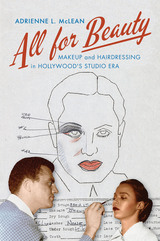
All for Beauty
Makeup and Hairdressing in Hollywood's Studio Era
Adrienne L. McLean
Rutgers University Press, 2022
Ever wonder why so many stars and featured players, male or female, in movies of Hollywood’s “Golden Age” look like they just stepped out of a beauty parlor even if the story places them in a jungle, a hospital bed, or the ancient past? All for Beauty examines how and why makeup and hairdressing evolved as crafts designed partly to maintain the white flawlessness of men and women as a value in the studio era. The book pays particular attention to the labor force, exploring the power and influence of cosmetics inventor and manufacturer Max Factor and the Westmore dynasty of makeup artists but also the contributions of others, many of them women, whose names are far less known. At the end of the complex, exciting, and at times dismaying chronicle, it is likely that readers will never again watch Hollywood films without thinking about the roles of makeup and hairdressing in creating both fictional characters and stars as emblems of an idealized and undeniably mesmerizing visual perfection.
[more]
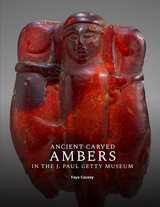
Ancient Carved Ambers in the J. Paul Getty Museum
Faya Causey
J. Paul Getty Trust, The
First published in 2012, this catalogue presents fifty-six Etruscan, Greek, and Italic carved ambers from the Getty Museum's collection—the second largest body of this material in the United States and one of the most important in the world. The ambers date from about 650 to 300 BC. The catalogue offers full description of the pieces, including typology, style, chronology, condition, and iconography. Each piece is illustrated.
The catalogue is preceded by a general introduction to ancient amber (which was also published in 2012 as a stand-alone print volume titled Amber and the Ancient World). Through exquisite visual examples and vivid classical texts, this book examines the myths and legends woven around amber—its employment in magic and medicine, its transport and carving, and its incorporation into jewelry, amulets, and other objects of prestige. This publication highlights a group of remarkable amber carvings at the J. Paul Getty Museum.
This catalogue was first published in 2012 at museumcatalogues.getty.edu/amber/. The present online edition of this open-access publication was migrated in 2019 to www.getty.edu/publications/ambers/; it features zoomable, high-resolution photography; free PDF, EPUB, and Kindle/MOBI downloads of the book; and JPG downloads of the catalogue images.
The catalogue is preceded by a general introduction to ancient amber (which was also published in 2012 as a stand-alone print volume titled Amber and the Ancient World). Through exquisite visual examples and vivid classical texts, this book examines the myths and legends woven around amber—its employment in magic and medicine, its transport and carving, and its incorporation into jewelry, amulets, and other objects of prestige. This publication highlights a group of remarkable amber carvings at the J. Paul Getty Museum.
This catalogue was first published in 2012 at museumcatalogues.getty.edu/amber/. The present online edition of this open-access publication was migrated in 2019 to www.getty.edu/publications/ambers/; it features zoomable, high-resolution photography; free PDF, EPUB, and Kindle/MOBI downloads of the book; and JPG downloads of the catalogue images.
[more]
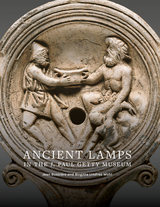
Ancient Lamps in the J. Paul Getty Museum
Jean Bussière
J. Paul Getty Trust, The, 2017
In the collection of the J. Paul Getty Museum are more than six hundred ancient lamps that span the sixth century BCE to the seventh century CE, most from the Roman Imperial period and largely created in Asia Minor or North Africa. These lamps have much to reveal about life, religion, pottery, and trade in the ancient Graeco-Roman world. Most of the Museum’s lamps have never before been published, and this extensive typological catalogue will thus be an invaluable scholarly resource for art historians, archaeologists, and those interested in the ancient world.
Reflecting the Getty's commitment to open content, Ancient Lamps in the J. Paul Getty Museum is available online at http://www.getty.edu/publications/ancientlamps and may be downloaded free of charge in multiple formats, including PDF, MOBI/Kindle, and EPUB, and features zoomable images and multiple views of every lamp, an interactive map drawn from the Ancient World Mapping Center, and bibliographic references.
For readers who wish to have a bound reference copy, a paperback edition has been made available for sale.
[more]
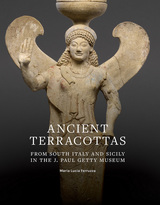
Ancient Terracottas from South Italy and Sicily in the J. Paul Getty Museum
Maria Lucia Ferruzza
J. Paul Getty Trust, The, 2016
In the ancient world, terracotta sculpture was ubiquitous. Readily available and economical—unlike stone suitable for carving—clay allowed artisans to craft figures of remarkable variety and expressiveness. Terracottas from South Italy and Sicily attest to the prolific coroplastic workshops that supplied sacred and decorative images for sanctuaries, settlements, and cemeteries. Sixty terracottas are investigated here by noted scholar Maria Lucia Ferruzza, comprising a selection of significant types from the Getty’s larger collection—life-size sculptures, statuettes, heads and busts, altars, and decorative appliqués. In addition to the comprehensive catalogue entries, the publication includes a guide to the full collection of over one thousand other figurines and molds from the region by Getty curator of antiquities Claire L. Lyons.
Reflecting the Getty's commitment to open content, Ancient Terracottas from South Italy and Sicily in the J. Paul Getty Museum is available online at www.getty.edu/publications/terracottas and may be downloaded for free.
Reflecting the Getty's commitment to open content, Ancient Terracottas from South Italy and Sicily in the J. Paul Getty Museum is available online at www.getty.edu/publications/terracottas and may be downloaded for free.
[more]
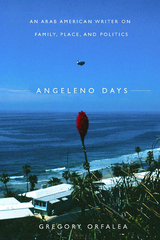
Angeleno Days
An Arab American Writer on Family, Place, and Politics
Gregory Orfalea
University of Arizona Press, 2009
Though he has spent half of his life elsewhere, Gregory Orfalea has remained obsessed with Los Angeles. That “brutal, beautiful city along the Pacific sea” shaped him and led to a series of essays originally published in the Los Angeles Times Magazine. These deeply moving pieces are gathered here together for the first time.
Populated with fascinating characters—the Angelenos of Orfalea’s life—these essays tell the story of the author’s trials. He returns to Los Angeles to teach, trying to reconcile the LA of his childhood with the city he now faces. He takes on progressively more difficult and painful subjects, finally confronting the memories of the shocking tragedy that took the lives of his father and sister.
With more than 400,000 Arab Americans in Los Angeles—probably surpassing Detroit as the largest contingent in America—Orfalea also explores his own community and its political and social concerns. He agonizes over another destruction of Lebanon and examines in searing detail a massacre of civilians in Iraq.
Angeleno Days takes the memoir and personal essay to rare heights. Orfalea is a deeply human writer who reveals not only what it means to be human in America now, but also what it will take to remain human in the days to come. These essays soar, confound, reveal, and strike at our senses and sensibilities, forcing us to think and feel in new ways.
Populated with fascinating characters—the Angelenos of Orfalea’s life—these essays tell the story of the author’s trials. He returns to Los Angeles to teach, trying to reconcile the LA of his childhood with the city he now faces. He takes on progressively more difficult and painful subjects, finally confronting the memories of the shocking tragedy that took the lives of his father and sister.
With more than 400,000 Arab Americans in Los Angeles—probably surpassing Detroit as the largest contingent in America—Orfalea also explores his own community and its political and social concerns. He agonizes over another destruction of Lebanon and examines in searing detail a massacre of civilians in Iraq.
Angeleno Days takes the memoir and personal essay to rare heights. Orfalea is a deeply human writer who reveals not only what it means to be human in America now, but also what it will take to remain human in the days to come. These essays soar, confound, reveal, and strike at our senses and sensibilities, forcing us to think and feel in new ways.
[more]
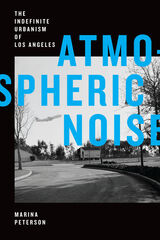
Atmospheric Noise
The Indefinite Urbanism of Los Angeles
Marina Peterson
Duke University Press, 2021
In Atmospheric Noise, Marina Peterson traces entanglements of environmental noise, atmosphere, sense, and matter that cohere in and through encounters with airport noise since the 1960s. Exploring spaces shaped by noise around Los Angeles International Airport (LAX), she shows how noise is a way of attuning toward the atmospheric: through noise we learn to listen to the sky and imagine the permeability of bodies and matter, sensing and conceiving that which is diffuse, indefinite, vague, and unformed. In her account, the “atmospheric” encompasses the physicality of the ephemeral, dynamic assemblages of matter as well as a logic of indeterminacy. It is audible as well as visible, heard as much as breathed. Peterson develops a theory of “indefinite urbanism” to refer to marginalized spaces of the city where concrete meets sky, windows resonate with the whine of departing planes, and endangered butterflies live under flight paths. Offering a conceptualization of sound as immanent and non-objectified, she demonstrates ways in which noise is central to how we know, feel, and think atmospherically.
[more]
READERS
Browse our collection.
PUBLISHERS
See BiblioVault's publisher services.
STUDENT SERVICES
Files for college accessibility offices.
UChicago Accessibility Resources
home | accessibility | search | about | contact us
BiblioVault ® 2001 - 2024
The University of Chicago Press









